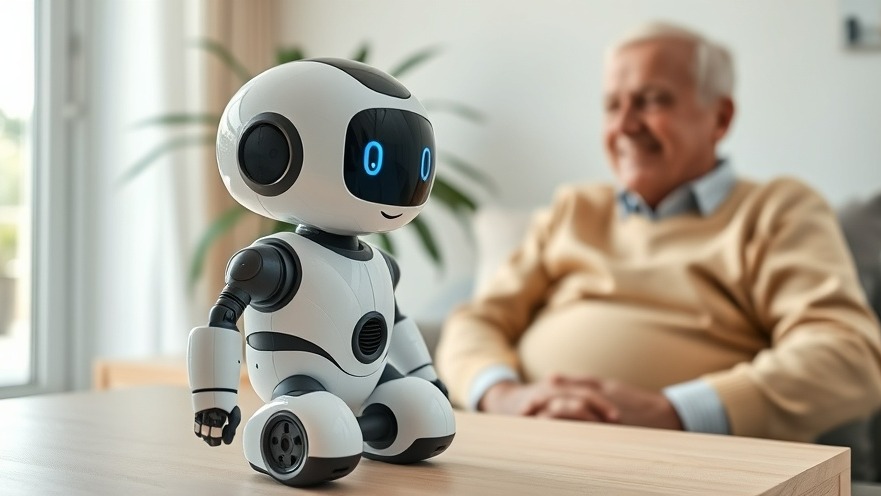
Understanding the Role of Robots in Aging
As the world's population ages, the question arises: can technology, particularly robots, drastically improve the quality of life for older adults? With the figure projected to exceed two billion individuals aged 60 and above by 2050, the integration of robots into everyday care routines becomes not just beneficial but essential.
The Need for Independence
Aging often brings about a decline in physical and cognitive health, impacting self-sufficiency. Daily activities—like cooking, medication management, and mobility—can transform into challenges that jeopardize an individual’s independence. Thus, the importance of innovative solutions in elder care is magnified.
Socially Assistive Robots: A Glimpse into the Future
Recent research from Nottingham Trent University and its collaboration with Sheffield Hallam University and Loughborough University highlights the efficacy of socially assistive robots. Unlike traditional care, these robots can offer personalized support and companionship while helping to maintain autonomy in daily living.
Engaging with older adults from diverse backgrounds revealed a general acceptance of the technology. Most appreciated the robots’ potential to foster independence, particularly if they were designed to be user-friendly and affordable.
Functionality of Robotics in Daily Living
So, how might these robots transform everyday life? Robots are not just machines; they work as helpers — reminding users to take medication, encouraging physical activity, or even aiding those with physical limitations in performing everyday tasks. Their designs range from pet-like robots, which offer companionship, to more functional devices that provide reminders and alerts.
Challenges and Considerations
However, as we embrace this new technology, we must also tread carefully. Poorly designed robots, which may be overly demanding or complicated, could create additional stress. A study conducted emphasized that while robots could enhance cognitive performance in daily tasks, they could overwhelm users if they over-communicate or present too much information at once, indicating the need for balance in robot functionalities.
Real-World Application: Enhancing Lives
Integrating robots into healthcare systems opens doors for innovations that can significantly enhance the lives of many seniors. The future could see a variety of robots in homes—some performing logistical tasks, while others engage socially, potentially reducing feelings of loneliness among elders.
Statistics and Future Predictions
Looking ahead, the adoption of these technologies aligns with global trends favoring smart, connected solutions. Health systems advocating for automation and smart home solutions are likely to see reduced costs while improving care delivery. The metrics from pilot programs designed to introduce robots in elder care settings suggest a positive reception, confirming earlier findings that support increasing implementation.
Cultural Perspectives on Robotic Care
Different regions and cultures may perceive robotic assistance in varied lights. While some may embrace it as a modern solution, others may hesitate due to comfort levels with technology. Addressing these perspectives is key to ensuring broader acceptance and successful implementation.
Conclusion: Taking the Next Steps
As we dive deeper into the realm of robotic assistance for aging populations, healthcare providers must remain informed regarding technology advancements that can impact their practice. By evaluating emerging technologies and their implications, practitioners can better serve their aging patients.
Stay ahead of the trends in robotic health care solutions to ensure your practice remains at the forefront of new innovations. Prepare your patients for these empowering aids to aging, and together, pave the way for a more independent future.
 Add Row
Add Row  Add
Add 




Write A Comment